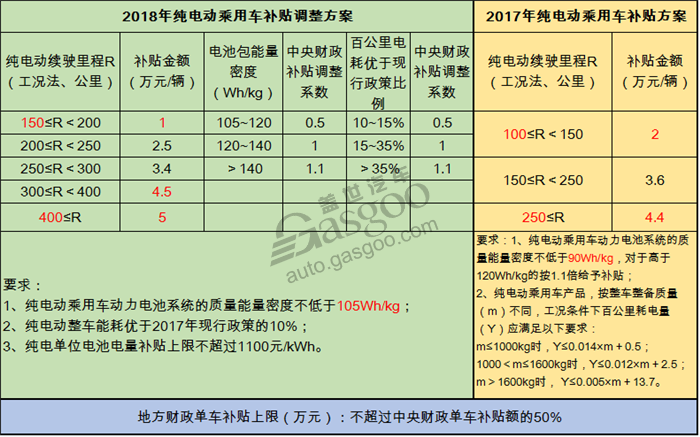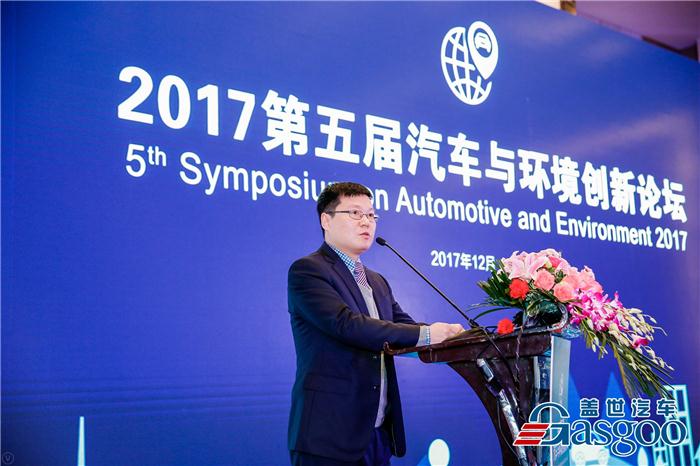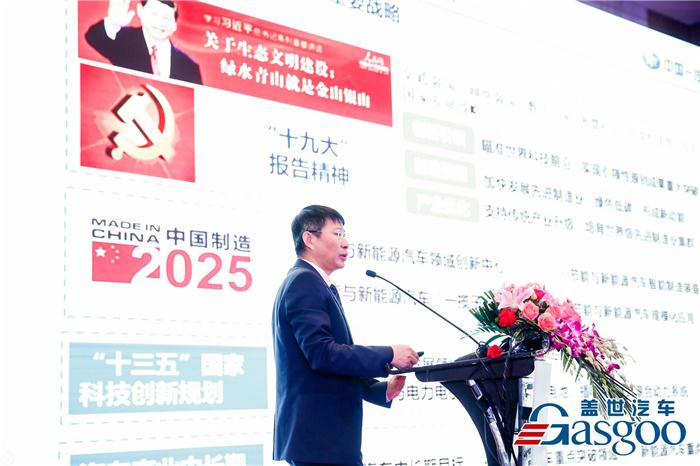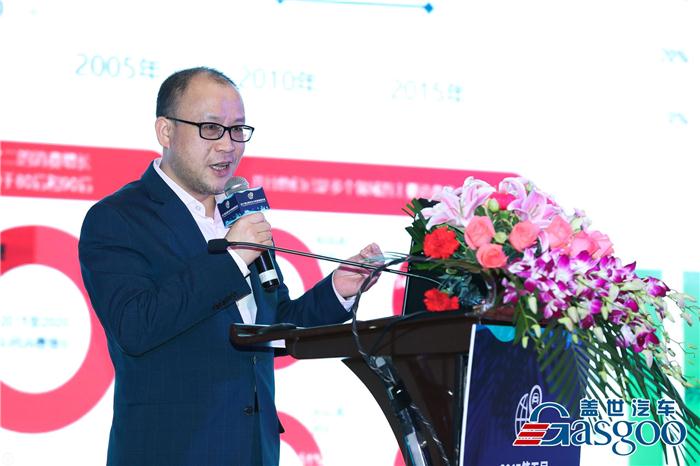At key points in the development of new energy vehicles, all walks of life are particularly sensitive to changes in the policy. In recent days, rumors about the early retreat of new energy subsidies have been buzzing, and even the automotive stocks have suffered a sharp decline. According to the 2018 new energy vehicle subsidy program circulated on the Internet, the subsidy for new energy passenger vehicles has been subdivided by the cruising range (from the third gear in 2017 to the fifth gear), and the threshold has been increased to 150km, and As subsidies for vehicle models with a mileage of more than 300km are being promoted, it is obvious that companies are encouraged to produce high-quality vehicles with low mileage, high energy density, and high mileage.

In fact, the subsidy retreat was previously determined by several ministries and commissions such as the Ministry of Finance, the National Development and Reform Commission, and the Ministry of Industry and Information Technology. According to the policy direction of last year, new energy vehicles will subsidize the 2016 2016 subsidy by 20 percent on the basis of 2016 subsidies. 2019 - The subsidy standard for 2020 will fall by 40% on the basis of 2016 until the subsidies are completely withdrawn in 2020. If the latest subsidy policy is finalized, then the subdivided subsidy policy of 2018 will have the largest decline of nearly 40%, which means that the subsidy reduction standard in 2019 will be implemented in advance in 2018.
Although the subsidy adjustment has not yet received the official response from the Ministry of Finance and the Ministry of Industry and Information Technology, it can be seen from the release signal that the country’s transformation of new energy vehicles from Pratt & Whitney’s support to guiding support will become a trend, which will inevitably affect the production of low life A00. Electric passenger car companies and companies that produce electric buses.
In fact, since the official announcement of the subsidy withdrawal policy in 2015, it has become a signal to encourage automakers to reduce costs, increase research and development capabilities, and produce high-endurance products, and has given them a certain period of time. However, as the “cheat compensation†incident surfaced, it can be clearly seen that some car companies did not face the urgency of subsidy withdrawal. On the contrary, holding a luck still works to hold the dream of subsidizing the thigh.
Under the inevitable trend driven by market-driven alternative policies, the sooner the adaptation policy becomes more apparent. For traditional car companies that have been deeply plowing in the new energy passenger vehicle market for many years, subsidies will certainly bring development pains. Period, but as soon as possible to adjust the strategic direction, change the passive to take the initiative to reduce the impact of subsidies on the company to minimize the impact.
At the 5th Automotive and Environmental Innovation Forum held by Gasgo Motors on December 8-9, Gao Jingjing, project director of the Geely Automobile Research Institute, stated that Geely had been in the "Blue Geely Action" strategic plan that was released in 2015. It is announced that sales of new energy vehicles will account for more than 90% of the company's total sales by 2020, and Geely has indeed been moving toward 90% of new energy vehicles.

Gao Jingjing, Project Director, Geely Automobile Research Institute
At present, Geely's new energy vehicles mainly have three major technical routes: pure electric (EV), plug-in hybrid (PHEV), and main mix and weak mix of hybrid electric (HEV). According to Gao Jingjing, Geely EV pure electric platform is mainly emperor pure electric, follow-up there are a series of upgraded models; and the next generation of pure electric platform - PMA platform, will go to benchmark or even catch up with world-class pure electric vehicles. In terms of plug-in hybrid routes, Geely launched the first plug-in hybrid vehicle based on the CHS platform, the Imperial PHEV, in November; the CMA platform jointly developed at Geely and Volvo has traditionally-owned lead-gear models and plug-in hybrids. The model; while the 7DCTH platform will apply Volvo's technology to Geely models, and Geely's models are expected to come out of the platform next year. Gao Jingjing stated that Geely’s new energy models can meet the standard subsidy policy. In terms of fuel and electric hybrids, it will focus on the development of medium-mix and weak-mix technologies that will reduce the fuel consumption of traditional vehicles. The fuel-saving rate can exceed 10% and will be put on the market within the next two years.
Facing the country’s support for the introduction of new energy vehicles, Guangqi has been doing research and development. Guangqi Automobile’s Chief Technical Director, Qi Hongzhong, stated in the Automotive and Environmental Innovation Forum that “in the new energy sector, Guangzhou Automobile is currently Although the sales volume is relatively small, in fact, GAC researched relatively early in the new energy field, and there are currently five vehicles that are currently on the market, mainly the three models launched this year, and they are also trying to create new energy models for their joint venture brands. Development is also considered to be the first attempt to import from autonomous to joint ventures.â€

Chief Technical Director of Guangzhou Automobile Industry Research Institute
In the R&D of new energy core technologies, GAC has developed a large number of independent products through extensive development experience, including embedded computer platforms, power batteries, motor systems, and multi-mode electromechanical coupling systems. In the pure electric vehicle EV system, Guangzhou Automobile has built two platforms, and built three platforms based on the existing models in the HEV and PHEV systems. Zhai Hongzhong introduced: “In order to support the platform, we will focus on R&D in five technologies in the independent technology segment: First, battery safety management, second, fuel cell integration, third, electric system integration, and fourth, electromechanical coupling. It is an electromechanical power electronic control technology.†According to GAC, by 2019, EV models based on pure electric platforms will be launched, and PHEV hybrid platforms will also launch new models. By 2021, third-generation EV electric system platforms and PHEVs will be launched. And HEV hybrid system platform will also be introduced.
In the development of new energy vehicles, from the recent reform of FAW Group, we can see the importance of new energy vehicles. Deputy Director of China FAW New Energy Office Wang Deping introduced at the Automobile and Environment Forum. “In order to strengthen the development of new energy vehicles, FAW will The original Lightweight Materials Division of the Electric Vehicle Technology Center and the original new energy company of the Technical Center were integrated and a new energy development institute was established, that is, the electric vehicle department of the original technology center was upgraded to a development institute.†Strategically, FAW Group’s internal The "1233" strategy is proposed, that is, by 2020, FAW Group will build several platforms in the future: one is a 48-volt platform, the second is to build two hybrid platforms, and the third is to create three pure electric vehicle brands, and electricity. Drive system, battery system, future fuel cell system. The strategy is currently in internal discussions and is expected to be released early next year.

Deputy Director of China FAW New Energy Office Wang Deping
While developing new energy vehicles, it is also very important to develop traditional vehicles for energy conservation and consumption reduction. Wang Deping pointed out that different levels of vehicles need to adopt reasonable technical routes to meet fuel consumption regulations: From a cost perspective, A-class vehicles use 48V. Technology, Class B vehicles using HEV technology, C-class vehicles using PHEV technology is a better technical route. For Class B SUVs and Class C SUVs, HEV technology is an indispensable technology for achieving access. It is difficult to achieve access without using HEV technology in the Class C sedan. Even if HEV technology is used, there will be a gap between the fuel consumption level and the fuel consumption limit. .

Chang An Automobile Research Institute Dean Zhan Yisong
Zhan Yusong, president of Chang'an Automobile Research Institute, expressed similar views. He believes that different types of electric technology paths can be formed through different combinations, but the degree, performance, and cost of electrification have different manifestations. “For example, pure electricity, batteries, There are safety issues, such as charging, etc. All aspects will bring about corresponding problems, so in the end which method is better is the enterprise to consider issues, such as hybrid-based, supplemented by pure electricity. The second is It is mainly pure electricity, supplemented by 48V, which is still very good at the level of state subsidies, because the policy is there and it is a relatively good technical path for Chinese companies, and it can be done with mixed plug-in, no problem. ."
Cui Dongshu, secretary-general of the National Passenger Vehicle Market Information Association, believes that the adjustment of subsidies for new energy vehicles will reduce the overall amount of subsidies by raising technical standards, so that well-proven products and enterprises can be encouraged rather than “one size fits allâ€. Subsidy withdrawal will help speed up the process of industrial survival and the elimination of the fittest. It will in turn rely on subsidized enterprises to upgrade their technology, and will encourage companies with weaker capabilities to exit to optimize their industrial structure. Although the subsidy policy related to 2018 has not officially landed, no matter how the policy changes, companies must focus on upgrading technology to reduce costs. As the new energy automobile industry has entered a crucial stage of development, it is not a subsidy that determines the life and death of new energy vehicles. It is in the context of market-driven, policy-driven, and technological competition. force. As for how the policy changes, Xiao Bian will continue to pay attention.
Tyre Recycling Machine manufactured by Yilong Machinery, can creat 40-45% oil, creat huge profit for worldwide customers, 10 years experience served 1000+ customers,can customized according customer requirement, provide Tire Shredder Tire Recycling Machine, Waste Tire Recycling Machine convert solid waste to be fuel oil, help a lot of domestic economical developing.
Tyre Recycling Machine
Tire Recycling Equipment,Tire Recycling Machine,Tire Shredder Tire Recycling Machine,Waste Tire Recycling Machine
Shangqiu Zhongming Eco-Friendly Equipment Co., Ltd. , https://www.sqzhongminggroup.com